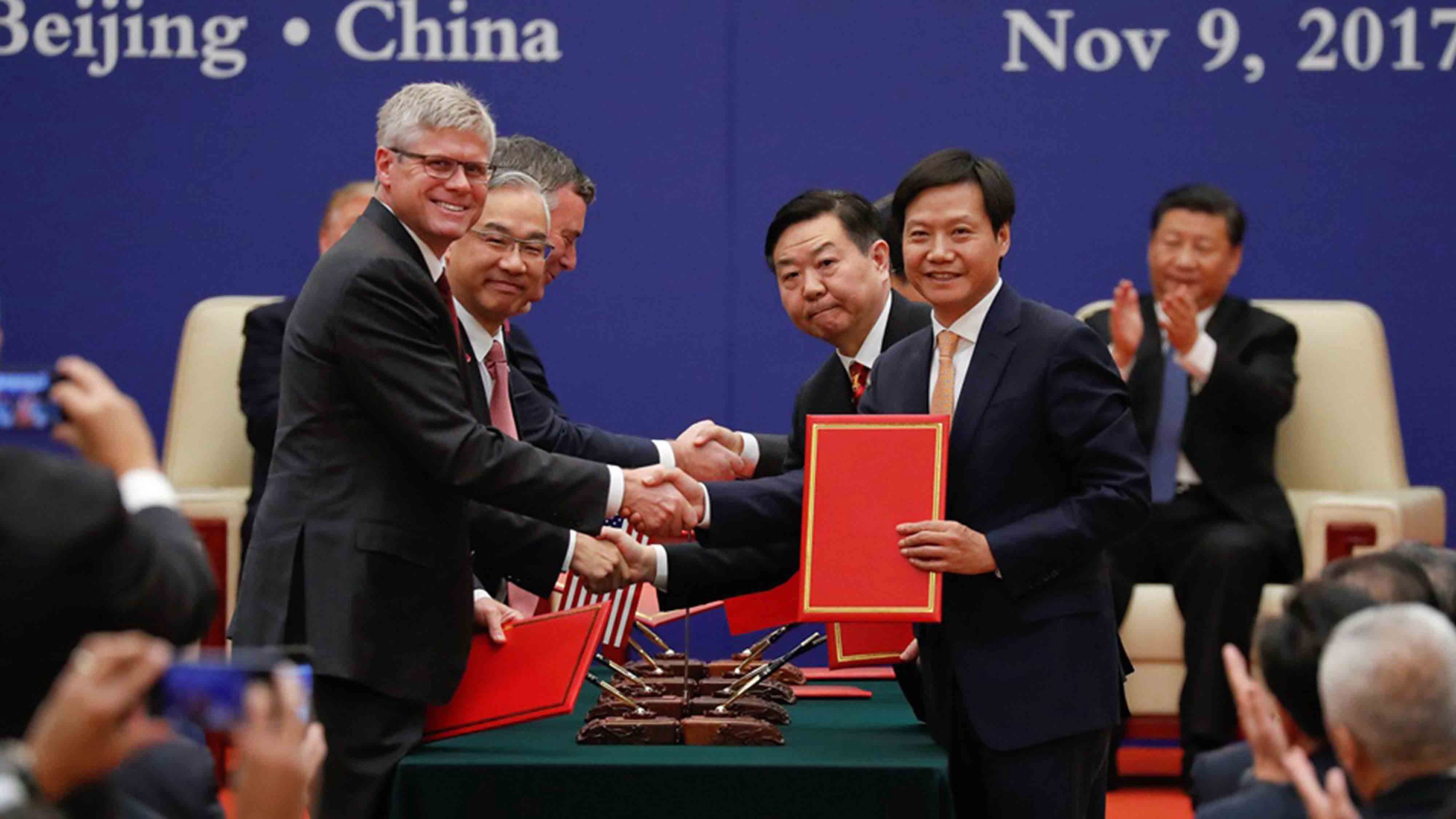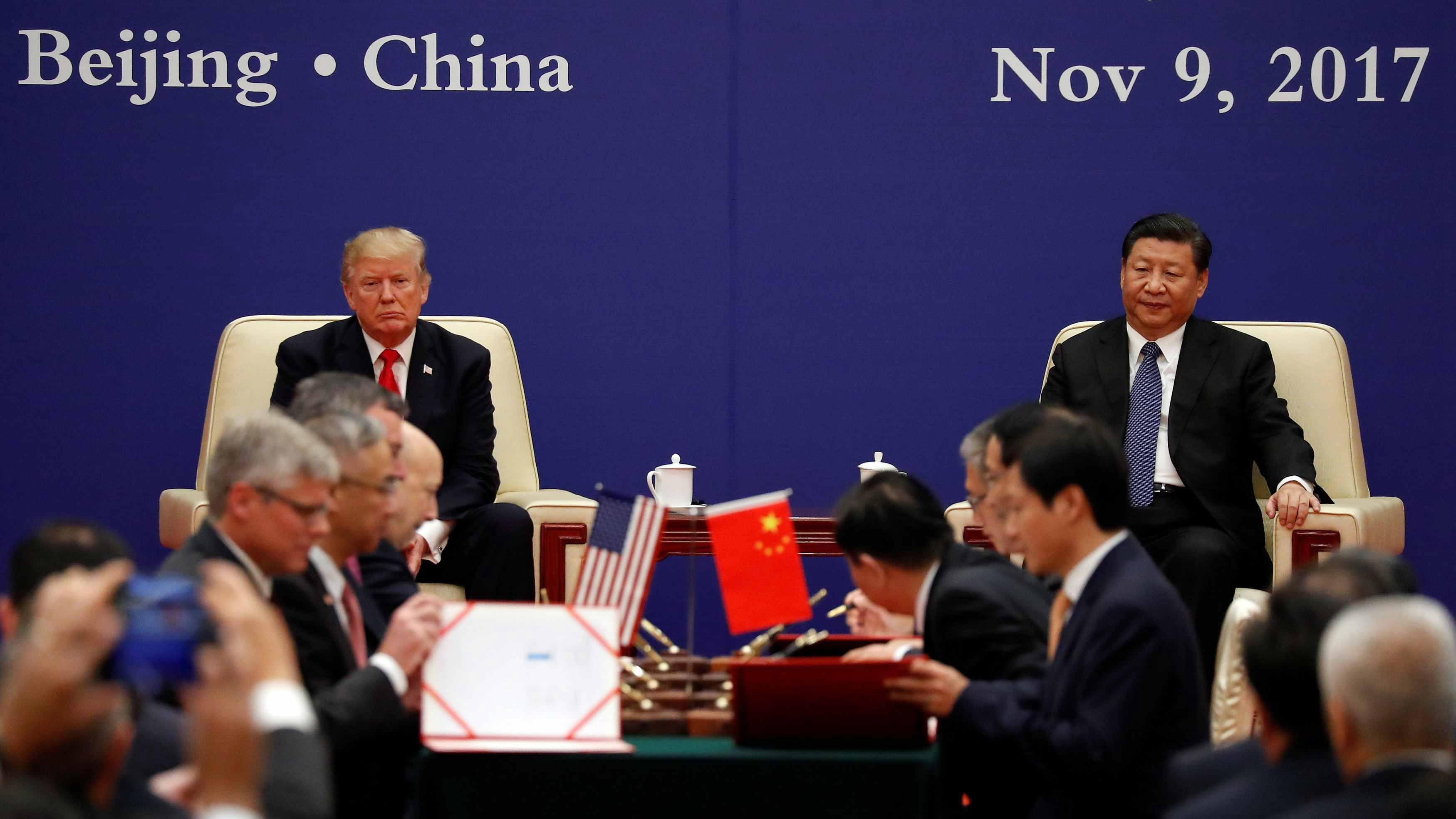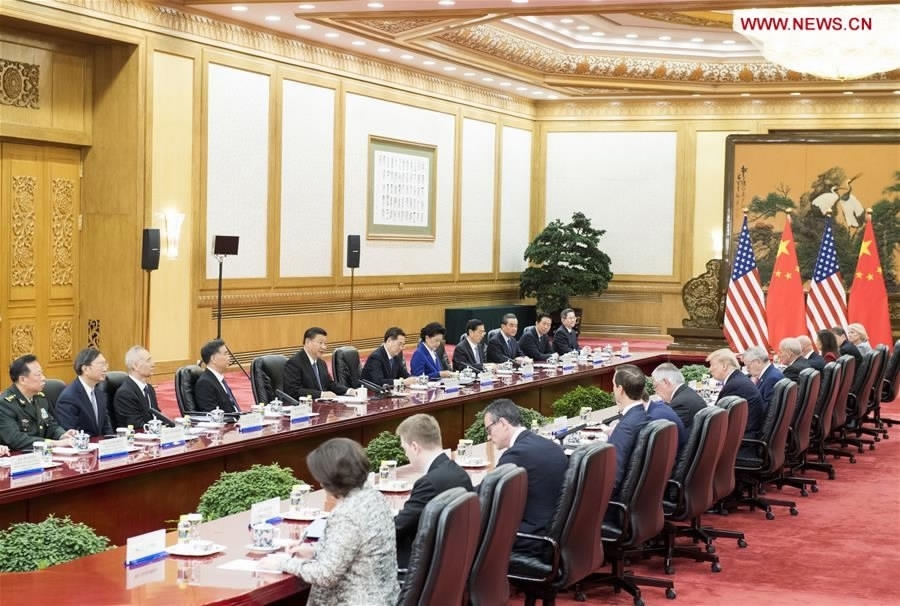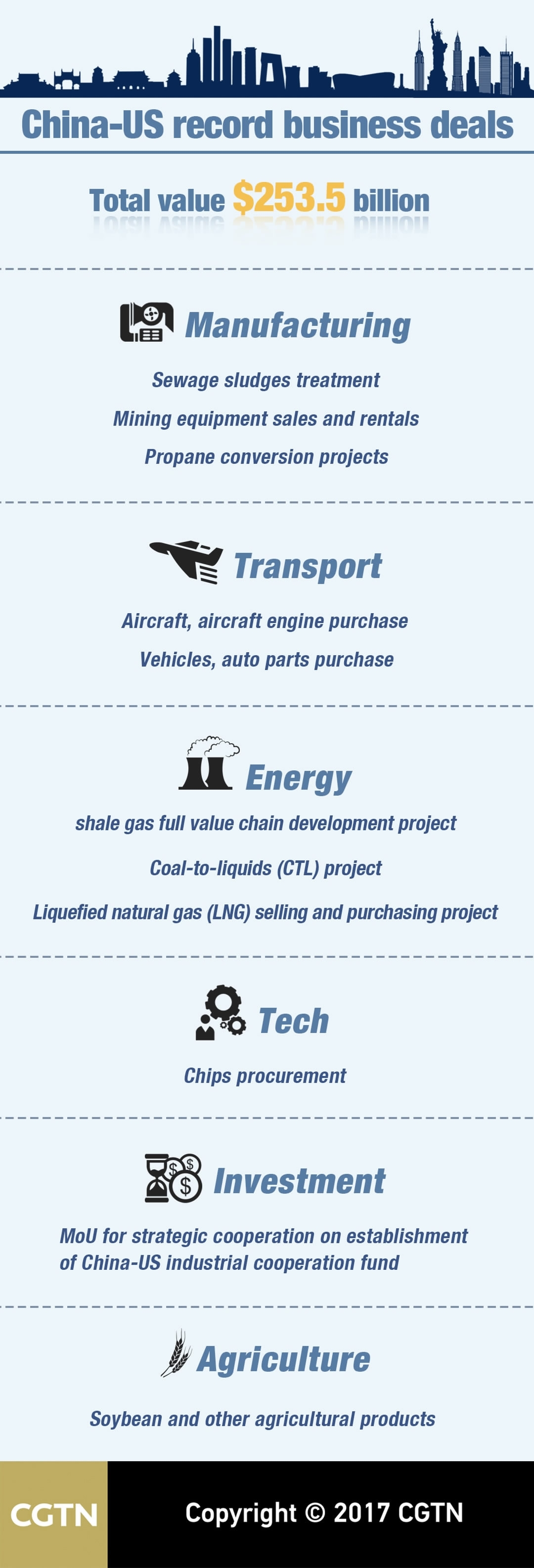
Opinions
17:56, 10-Nov-2017
Opinion: Don’t misinterpret US$ 253.5-bln deal and the embedded goodwill
By Li Yong

When four American kids were interviewed at the Tiananmen Square by a CGTN reporter about how they felt about President Trump’s visit to China, they all said “excited”. Yes, they were. But what everyone else is excited about: The sizable deal that China and the US inked -- 253.5 billion US dollars worth of trade contracts and investment projects. That is a history-making deal, setting the record of any “single” bilateral trade and investment package on the occasion of a state visit. It is perhaps the biggest deal that President Trump, a former businessman, has ever made in his lifetime.
But how should we really interpret these deals?

November 9, 2017: Chinese President Xi Jinping and US President Donald Trump witness the signing of commercial deals in Beijing. / Reuters Photo
November 9, 2017: Chinese President Xi Jinping and US President Donald Trump witness the signing of commercial deals in Beijing. / Reuters Photo
It is the result of mutual efforts, not a one-side win over the other -- a classic example of a win-win solution. It addressed both short-term needs as well as long-term interests, all of which could lead to further cooperation and possibly a new era of China-US economic and trade relations.
It is surprising, however, to find out deliberate interpretations when browsing the Western media reports on the deal and President Trump’s visit to Beijing. Some reports said President Trump's "tough stances" against China "softened" after the deals. Some also argued that the contracts signed are purchases that would have been made anyway but were just saved for signing during Trump’s visit.
Other comments floating around include: “They might be primarily MOUs (memorandum of understandings)” or “about 15 of those deals could take years to materialize” including the “$43-billion joint development agreement to advance a liquefied natural gas project in Alaska,” and so on.
No one seems to have mentioned the hard work by both sides to make all of those happen. Since the first meeting between the two presidents at Mar-a-Lago, the two sides have been working intensively on resolving the issues of common concern.
The four high-level dialogues -- the diplomatic and security dialogue, comprehensive economic dialogue, social and people-to-people dialogue, and law enforcement and cyber security dialogue -- as initiated by the two presidents, have served as key means of communications and coordination on various issues.
The success of China-proposed 100-day plan has emphasized the goodwill from the Chinese side and paved the way for both China and the US to work together on achieving greater results in relation to trade imbalance.

Chinese President Xi Jinping holds talks with US President Donald Trump at the Great Hall of the People in Beijing, November 9, 2017. /Xinhua Photo
Chinese President Xi Jinping holds talks with US President Donald Trump at the Great Hall of the People in Beijing, November 9, 2017. /Xinhua Photo
Naturally, the two countries have differences, but they should not be seen and treated as stumbling blocks as long as the two sides are willing to envision a future of “bigger pie.” It is in the interest of the people of both countries to have a healthy trade and investment tie, and this is the underlying principle that both sides adhere to in working out “deliverable results” from the state visit of President Trump.
The landmark deal is a demonstration of sincerity and growing rapport on both sides.
The deals involving the import of and investment in liquefied natural gas have made the two sides to escape the traditional mantra of “eating soybeans while on board of Boeing airplane,” thanks to President Trump’s deregulation on the export of natural gas.
China’s investment in the development of shale gas project has long-term implications on the bilateral trade and investment relations in addition to job opportunities to be created.
While the US is demanding relaxation of market access and equal treatment of American businesses in China, there are similar advocates by the Chinese side for relaxation of export control of high-tech products to China, fair treatment of Chinese investments in the US and abandonment of discriminatory measures against Chinese companies doing business with the US. Progresses can be reasonably expected from both sides, and skepticism does not help improve the relations.

VCG Photo
VCG Photo
Chinese President Xi Jinping has assured his counterpart of China's firm commitment to deeper reform, greater opening up, a path of peaceful development, expansion to converge interests with other countries and promoting coordination and cooperation among major countries, including the US.
A recent move by Tesla to establish a wholly-own electric car operation in Shanghai Free Port Area is supporting evidence of China’s commitments to improving business environments and market access.
Goodwill and sincerity are the basis of trust, and what both China and the US have achieved so far heralds better relations between the two countries. We need what is called “positive energy” instead of negative ones in dealing with the great progress made by both countries.
China does not want to get involved in the US politics and the debate or altercation about true or fake news. China is seriously engaging the US for a better relationship that will benefit not just the people of the two countries, but also the rest of the world. That should be objectively viewed and written about.
So, please, do not misinterpret the $253.5-billion deal and the embedded goodwill.

CGTN Photo
CGTN Photo
(Li Yong is a senior research fellow at the China Association of International Trade (CAIT), deputy secretary general and vice chairman of the CAIT, co-chairing the Center for US/Europe Economic and Strategic Studies. He is also executive councilor at the China Society of WTO Studies (CWTO) and a member of the Advisory Committee for Foreign Economic and Trade Policies of the CWTO. The article reflects the author's opinion, and not necessarily the views of CGTN. )

SITEMAP
Copyright © 2018 CGTN. Beijing ICP prepared NO.16065310-3
Copyright © 2018 CGTN. Beijing ICP prepared NO.16065310-3